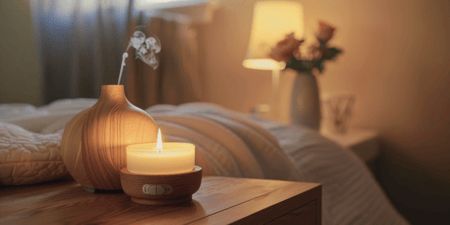
Naturopaths are not qualified to diagnose disease. Instead, they work alongside medical doctors with the aim of ensuring the best possible patient-centred health outcomes.
Naturopathic medicine can be considered essential when it comes to healing different chronic diseases. According to Southern Cross University[1], naturopathic medications are beneficial in healing polycystic ovary syndrome (PCOS), asthma, cardiovascular problems, and menopausal complications, and can also help to manage type 2 diabetes.
Naturopathy is an effective healing practice because it fosters the concept of whole-person healing. As a result, many people turn to naturopathy to assist them with health problems that conventional medicine may have been unsuccessful in treating.
Naturopaths may recommend natural remedies ranging from nutritional supplements to flower essences, which may not have the potential risks and side effects associated with pharmaceutical medication.

Naturopathy may be beneficial for relieving symptoms associated with:
- Anxiety
- Asthma
- Allergies
- Constipation
- Depression
- Diabetes
- Hypertension
- Hormonal issues
- Pain reliefs
- Panic attacks
- Sleep disorders
- Hay fever
- Headaches
- Endometriosis
What Is Naturopathy?
Naturopathy is a person-centred approach to healthcare that promotes the ability of the body to heal itself naturally. This whole-system and multi-modality approach incorporates natural practices like a healthy lifestyle and natural medicines.

Naturopathy focuses on identifying and treating the root causes of ailments[2] to prevent them from developing into serious complications, while strengthening the immune system's ability to fight diseases and infections[3].
The History Of Naturopathy
The concept of the healing power of nature has been around for centuries. It started in Greece 2,400 years ago and has been evolving through the years to the naturopathy practised today.
Hippocrates - 2,400 Years Ago
Hippocrates started the concept of naturopathic medicine 2,400 years ago. He was a Greek physician who lived from 460-370 BCE[4] and is traditionally known as the "father of medicine."
Hippocrates established the idea of the "healing power of nature" which is still practised in medicine today. He said, "Let food be thy medicine and medicine be thy food." This means that we should use natural foods to prevent and treat illnesses. Naturopathic doctors use this principle as the foundation of their practice.
To cement his concept of the healing power of nature, Hippocrates developed the theory of humors. According to this theory, there are four fluids in the body that need to be in balance for good health: blood, black bile, yellow bile, and phlegm.
If one of these fluids is out of balance, he believed it would result in illness. Hippocrates also believed that good health is a state of harmony between the body, mind, and spirit. These three concepts translate to the whole-person healing concept of naturopathy.
Modern Naturopathy
The term naturopathy was created from two words, "natura" (a Latin word for birth) and "pathos" (a Greek word for suffering). When the two terms are combined directly, they translate to "natural healing".
The term was coined in 1885 by John Scheel. He was a German physician who believed the body has an innate ability to heal itself.
Modern naturopathy has its roots in the "natural healing" systems of the 18th and 19th-century under the Natural Cure Movement of Europe. The natural healing systems are composed of "nature cures" that include using air, light, food, water, and herbs (from Austria). Hydrotherapy, a common practice in Germany, was also among the natural cures and it involved using water for healing purposes.

Doctors who favoured naturopathic medicine in the 19th century included Dr. Thomas Allinson. He developed the "Hygienic Medicine" theory which promoted healthcare through exercise, fresh air, diet, and bathing. He encouraged people to avoid coffee, tobacco, tea, and alcohol. This theory was also against vaccination and drugs.
In 1901, Benedict Lust, a German hydrotherapist, bought the term "naturopathy" from Scheel. Lust intended to use this term to describe the eclectic mix of natural healing methods that were being used by nature doctors.
Lust moved the concept of naturopathy from Germany to the United States of America in 1901, after being sent there by his father to spread his drugless medication tactics. At this time, naturopathy embraced all forms of natural healing which included:
- exercise
- diet
- manipulative therapies
- herbs
- hydrotherapy
- homoeopathy
- spiritual and psychological counselling
- electrotherapy.
Naturopaths consider Benedict Lust as the father of U.S naturopathy because he introduced the concept in America.
Lust founded the first school of naturopathic medicine in the United States in 1901. This is despite the fact that the American Association of Naturopathic Physicians (AANP) was founded in 1985[5]. The AANP is the national professional association for naturopathic doctors in the United States.
Currently, there are five accredited naturopathic colleges[6] in North America offering four-year naturopathic doctoral degrees. The courses include a standard medical curriculum and additional training in natural therapies
As more Americans trained in naturopathy, they formed the Naturopathic Society of America. Through this society, other schools of naturopathic medicine and large health facilities were developed in North America. These facilities aimed at providing naturopathic medicine to patients while the naturopathic colleges provided naturopathic training to those who wanted to be naturopathic physicians.
Naturopathic medicine was well established in Canada by 1920. Laws regulating the profession were enacted by 1925 in Ontario.
Antoine Bechamp and Claude Bernard
The 19th century played an important role in the development of naturopathy as a healing system in America. Many pioneers rose to the occasion to research and confirm the concept of naturopathy and healthcare. Two of these with notable work to date are Antoine Bechamp and Claude Bernard.
Bechamp and Bernard conducted research that confirmed that the condition of the inner terrain of the body determined the health of an individual. From their research, they also concluded that it was possible to restore the body's health by attending to this inner terrain. Thus, naturopathic medicine recognises good health as a product of healthy living and not just luck or chance.

According to Bernard, internal and external body factors are of paramount importance to a person's health. A negative electric charge and alkalinity were the internal factors while the external factors included the elimination of toxins and a healthy diet.
Rudolf Virchow supported Bechamp and Bernard's research by claiming that if he could live his life over again, he would spend it proving to the world that germs seek their natural habitat, which is the diseased human body. They do not seek to be the cause of diseased tissue in the human body.
Dr. Benedict Lust
Lust trained in chiropractic and hydrotherapy before coming to America. He was later joined by other naturopathic physicians such as John H. Kellogg, who is credited with inventing flaked cereal. Kellogg was in support of naturopathic medicine by claiming that the cereal aided in food digestion and would also lead Americans away from sin.
Lust was responsible for the spread of naturopathic medicine in the United States. He championed the establishment of naturopathic schools and hospitals after introducing naturopathy in America in 1901. He also published several books and journals, including "Neo Naturopathy" and the "Official Naturopath and Herald of Health."

In 1895, Lust built the Kneipp store, the first health food store in America. It was here that he introduced the concepts of naturopathy to the American public. The store also served as a platform for his products and therapies.
The Kneipp societies transformed into the Naturopathic Society of America in 1902. The society was then renamed the American Naturopathic Association. Through the existence of this association, America received many naturopathic physicians with Lust claiming they had more than 40,000 naturopathic practitioners.
The 20th century saw tremendous growth in naturopathy. It was during this century that naturopathic practitioners became on a par with allopathic doctors. Most people sought the services of naturopathic doctors in America in the 20th century because they claimed that these practitioners had vast knowledge in disease management and healthcare.
Lust's legacy continues to live on through the work of the American Association of Naturopathic Physicians (AANP) which is currently the largest professional organisation for naturopathic doctors in the United States.
Australian Associations
Naturopaths and Herbalists Association of Australia (NHAA)[7]
The NHAA is the professional body for naturopaths and herbalists in Australia and the oldest complementary medicine association in the country. Established in 1920[8] under the name of the National Herbalists Association of Australia, it was the only professional association in Australia dedicated to western medical herbalism.
In 2014, the NHAA became a full member of the World Naturopathic Federation[9] – a global body that shares its vision of robust educational standards and the continuing development of holistic medicine and approaches in healthcare; and in 2016 changed its name.
The organisation's main aim is to promote the naturopathic medicine profession in Australia. It does this by supporting naturopathic primary care physicians, providing learning and development opportunities to its members, and ensuring high standards of professional conduct and safety.
NHAA fosters the application of natural therapies in healthcare systems in Australia. It does this by supporting research that aims at improving the understanding of the use of natural therapies. It also promotes the benefits of using naturopathic and herbal medicine to healthcare professionals and the general public.
Since it was established, NHAA has played a crucial role in promoting complementary medicine in Australia. It became a full member of the World Naturopathic Federation in 2014. This saw NHAA gain international recognition for its work in the naturopathic profession.
Because NHAA is focused on building awareness and trust in the naturopathic and natural medicine profession, it believes in the following principles:
- A formal definition of naturopathy
- Registration for naturopathic physicians
- At least 4-year degree qualification in naturopathic profession
Australian Traditional Medicine Society (ATMS)[10]
The ATMS is Australia’s largest national professional association of natural medicine practitioners. It is a multidisciplinary association representing around 12,000 accredited practitioners throughout Australia.
It promotes and represents professional practitioners of natural medicine, who are encouraged to pursue the highest ideals of professionalism in their natural medicine practice and education.
Founded in 1984, it is the only natural medicine practitioner association appointed to two Commonwealth statutory committees, where it represents the interests of the entire natural medicine practitioner profession.
Australian Natural Therapists Association (ANTA)[11]
ANTA’s mission is to provide the public with best-practice health care, and the highest possible standards for the conduct and safety of traditional medicine and natural therapy practitioners.
Founded in 1955, ANTA is one of the original Schedule 1 bodies as defined in the regulations of the Therapeutic Goods Act 1989. A person is only said to be a member of a Schedule 1 organisation if they have the training and qualifications appropriate or necessary for membership of that organisation.
SoulAdvisor has a stringent qualification process for its practitioners to be registered on the platform and we work closely with industry associations to ensure standards are met.
Post-War Naturopathy
With the increase in popularity of naturopathic medicine, many naturopathic schools and hospitals were established in America. These institutions provided naturopathic education and training to interested individuals.
The post-war years (after 1945) saw a decline in the use of natural therapies as it marked the era of scientific reductionism. Most people stopped believing in medical 'miracles' which to many, was the basis of naturopathy.
These years saw the emergence of pharmaceutical drugs. Many companies emerged and started to manufacture drugs like penicillin which were considered more effective in the treatment of diseases.
This led to a decline in the use of naturopathic medicine and complementary therapies as most people started to rely on pharmaceutical drugs for the management of their health conditions. The trend continued through the 1950s, however this has changed significantly in recent decades, with two out of three Australians[12] now using complementary therapies.
Practitioners and the public at large placed their trust in allopathic medicine which was considered more 'scientific' because of advances in surgical techniques. Allopathic doctors were known to use effective drugs in the treatment of diseases while naturopathic doctors relied on natural therapies.
Apart from the advent of modern medicine, the Flexner Report[13] published by the Carnegie Foundation for the Advancement in Teaching in 1910 also played a role in the decline of naturopathic medicine.
The report criticised many aspects of naturopathic medical schools at the time because it lacked a scientific foundation. The report led to the closure of many American medical schools, including naturopathic schools and hospitals as it considered their teachings and treatments to be of low quality.
The worst part of the report is that it increased the mockery of homoeopathy, eclectic medicine, osteopathy, and physiomedicalism, which were the main therapies used by naturopaths at that time.
The report had a significant impact on naturopathic medical education and led to the establishment of modern, allopathic medicine as the dominant form of healthcare in America. It also championed the establishment of modern medicine because it was based on science and research.
The United States Department of Health, Education and Welfare issued a statement regarding naturopathic education in 1968. According to the report, naturopathic education was not sufficient to provide learners with the necessary knowledge to successfully diagnose diseases and provide appropriate medication. Due to the findings of the report, it was decided that medicare coverage in the United States should not include naturopathic medicine. An Australian committee in 1977 made a similar decision whereby it was decided that naturopaths should not be licensed to practice in Australia.
Late 20th Century- 1970s Onwards
The 1970s saw a resurgence of interest in naturopathy in the United States and Canada. This came as a result of the formation of the "holistic health" movement.
The holistic health movement was a response to the dominant allopathic model of healthcare that was based on treating isolated body parts. The holistic health movement called for a more integrative and whole-person approach to healthcare.
This led to an increase in the use of natural therapies like naturopathy and saw many people turn to these therapies. As a result of the campaigns by this movement, many people became disillusioned with allopathic medicine. They believed that allopathic drugs were not effective in the treatment of chronic diseases and that they often caused adverse effects. This explains why people started turning to complementary medication like naturopathy to heal diseases deemed futile to conventional medicine.

The "holistic health" movement was established on the five domains of holistic health. These domains and their practices are illustrated below.
Physical - encompasses our physical bodies and the environment around us. It's based on the approach that our physical health is determined by our lifestyle choices, diet, and exercise.
- Sleep for at least 8 hours daily
- Eat a diet high in plant-based foods and pastured animal products
- Eat carbohydrates, protein, and fats to ensure a balanced blood sugar
- Engage in exercises daily. At least for 30 minutes
- Avoid tobacco and alcohol
Mental - focuses on our mental well-being and includes our thoughts, emotions, and behaviours. Its main agenda is to help us achieve a sense of balance and well-being.
- Avoid excessive alcohol and smoking
- Keep your mind active by engaging in learning activities
- Consume gut healing foods rich in prebiotics and probiotics
Social - looks at our relationships with others and the role that they play in our lives. It emphasises the importance of having healthy relationships for overall health and wellbeing.
- Make time for in-person interactions
- Participate in your local community’s activities
- Avoid people who may cause stress in your life
Spiritual - is about connecting with something larger than ourselves. It could be through religious or spiritual practices that help us find meaning and purpose in life.
- Spend some time in daily meditations
- Embrace nature cure
- Take time to practise your faith if you’re religious
Emotional - is concerned with the emotional well-being of human beings.
- Get therapy when necessary
- Embrace stress reduction and mindfulness habits like meditation
The movement advocated for the use of natural therapies like naturopathy to treat diseases. It also encouraged people to take responsibility for their health and wellbeing. These practices were in contrast to the allopathic model which placed responsibility on doctors.
The renewal of interest in holistic health was witnessed after the first National Conference on Holistic Health in California in 1975[14]. After the conference, the Holistic Medical Association and the American Holistic Health Association (AHHA) were established. These associations were established to provide a platform for sharing of information and ideas about holistic health.
The late 20th century also saw an increase in the number of holistic health schools in the West. These schools included:
- Naturopathic medicine schools[15]
- Massage therapy schools
- Acupuncture schools
- Chiropractic schools
Naturopathy in the 21st Century
The 21st century has seen continued growth in the popularity of naturopathy, most likely due to the increase in chronic diseases and the need for more integrative forms of healthcare. People are turning to Traditional Complementary Integrative Health Care (TCIH) in the 21st century for the same reasons they did in the 1970s.
Traditional and Complementary MedicineT&CM was is a term coined by the World Health Organization (WHO)[16]. It refered to the “knowledge, skill, and practices based on the theories, beliefs, and experiences indigenous to different cultures used in the maintenance of health as well as in the prevention, diagnosis, improvement or treatment of physical and mental illness”. More recently TCIH[17] has come to replace this terminology, placing the concept of Integrative Health as central to an understanding of the continuum of health care options as opposed to either/or.
According to the GWI, the TCIH market grew from $376 billion in 2017 to $432 billion in 2019, but contracted to $413 billion in 2020 likely due to Covid19. However, GWI also projects a 7% annual growth from 2020-2025, reaching $583 billion[17].
The changing regulatory scenario in many countries whereby TCIH practices are being used for health in the form of herbs, essences, nutritional supplements, etc. has been significant. Moreover, there are robust government initiatives to promote TCIH therapies through strong transnational connections that are likely to fuel the market growth in the coming years.

There are various types of TCIH practices in the 21st century.
Natural Medicine
Body
Massage
Energy Medicine
Movement
Mind
Yoga
Final Thoughts
Naturopathy has a rich history dating back to the 18th century. Over the years, more research has been done to make the practice safer and more effective.
Naturopathic medicine is a Traditional and Complementary Medicine used in conjunction with conventional medicine. With a focus on holistic care, naturopathy fosters whole-person treatment, not just the disease. This includes physical, mental, emotional, and spiritual well-being healthcare.
The significant difference between conventional medicine and naturopathic medicine is that the latter aims to identify the root cause of an ailment and provide necessary interventions. This way, naturopathy practitioners manage acute and chronic illnesses and provide prevention.
SoulAdvisor has many naturopathy practitioners in Australia performing both in-person and online naturopathy services.

References
1. World-first scoping study shows benefits in naturopathic medicine treatments. Southern Cross University; 2019.
2. Login. Australian Naturopathic Practitioners Association; [cited on 2024 Dec 31].
3. Naturopathy. Australian Traditional-Medicine Society (ATMS); [cited on 2024 Dec 31].
4. Shakespeare and the four humours. U.S. National Library of Medicine; [cited on 2024 Dec 31].
5. About Us. American Association of Naturopathic Physicians; [cited on 2024 Dec 31].
6. Find the School to Fit Your Needs. Association of Accredited Naturopathic Medical Colleges; [cited on 2024 Dec 31].
7. Who We Are. Naturopaths & Herbalists Association of Australia; 2024.
8. Who We Are. Naturopaths & Herbalists Association of Australia; 2024.
9. Welcome to WNF. World Naturopathic Federation;
10. About Us. Australian Traditional Medicine Society; [cited on 2024 Dec 31].
11. Abou. ANTA; [cited on 2024 Dec 31].
13. Duffy TP. The Flexner Report--100 years later. Yale J Biol Med; 2011.
14. A History of Holistic Health. Natural Healers; [cited on 2024 Dec 31].
15. Naturopathic Schools. Natural Healers; [cited on 2024 Dec 31].
16. Traditional, Complementary and Integrative Medicine. WHO; [cited on 2024 Dec 31].
17. WHO Director-General discusses priorities on traditional, complementary and integrative healthcare with civil society. WHO; [cited on 2024 Dec 31].
Disclaimer: This Content has been developed from our generous global community and is intended for informational purposes only. This Content is not, nor is it intended to be, a substitute for professional medical advice, diagnosis, or treatment and should never be relied upon. Further, the personal views and experiences published are expressly those of the author, and do not represent the views or endorsement of SoulAdvisor through the act of publication on our site.
































































